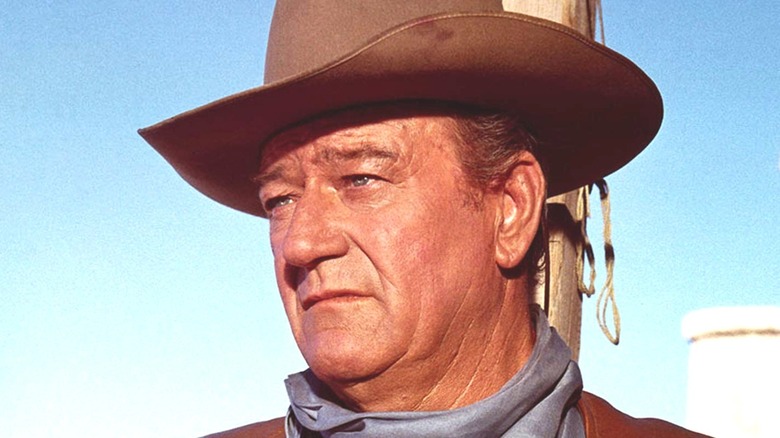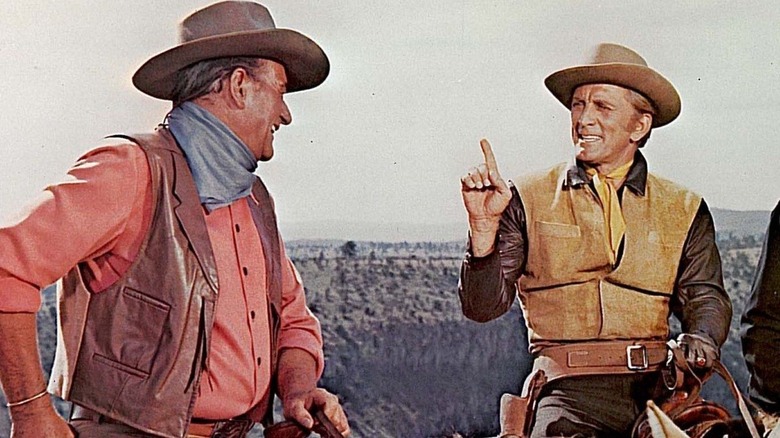This Is Where The War Wagon Was Filmed
Long before Marvel and DC took over the big screen with awe-inspiring superhero epics, the Western genre ruled the entertainment roost. Not long after the creation and proliferation of the movie camera, pioneer filmmakers set out to tell both fictional and, to some extent, historically inspired tales of cowboys and frontiersmen who trekked the so-called Wild West. Moviegoers, young and old alike, latched onto these productions, hence their domination of mainstream pop culture for roughly half a century.
To this day, films like the near-perfect "Stagecoach" and "The Good, the Bad and the Ugly" remain fan favorites across the globe. Almost by proxy, those who starred in these beloved projects have maintained their presence in pop culture as if they were still in their prime today. There's perhaps no bigger name in the western genre than the late Marion Morrison, better known as John Wayne, whose acting tenure spanned over 50 years and encompassed countless silver screen endeavors.
The American Western began to lose commercial steam as the 1960s turned to the '70s, contributing to their modern near-extinction. However, Wayne stuck by his roots all the same and added several notable titles to his filmography in the twilight years of his career. For instance, 1967's "The War Wagon" from famed Western writer and director Burt Kennedy was quite a standout of the bunch. Like most in its class, it's both entertaining and visually stunning, thanks to the production team's penchant for scouting the perfect backdrops. Here's where it was shot.
The War Wagon was filmed the old fashioned way
Based on Claire Huffaker's 1957 novel, "Badman," "The War Wagon" combines the adventurous spirit of a tried-and-true Western with the off-the-rails shenanigans of a heist flick. John Wayne stars as Taw Jackson, a rancher who was recently released from prison for a crime he did not commit. Looking to get even with his rival, Frank Pierce (Bruce Cabot), Jackson reluctantly teams up with the outlaw Lomax (Kirk Douglas) to steal one of his stagecoaches containing $500,000 in gold. Throughout this adventure, viewers are treated to some remarkable scenery that can only be attributed to location shooting.
In the late 1960s, the green screen and the recently developed StageCraft technology were far from the industry standard. Therefore, filmmakers had two options: construct elaborate and sometimes pricey sets in a studio or find real-world areas to replicate the desired setting of their production. Likely, at least partially, for budgetary reasons, Kennedy went with the latter, filming the entirety of "The War Wagon" at Sierra de Órganos National Park in Sombrerete, Zacatecas, Mexico (via IMDb). He and the team managed to complete principal photography in a 12-week span beginning in mid-September of 1966.
A throwback in every sense of the word, "The War Wagon" is a triumph as a Western, another fine addition to John Wayne's cinematic legacy, and a prime example of the unique beauty one can only achieve by filming on location.

